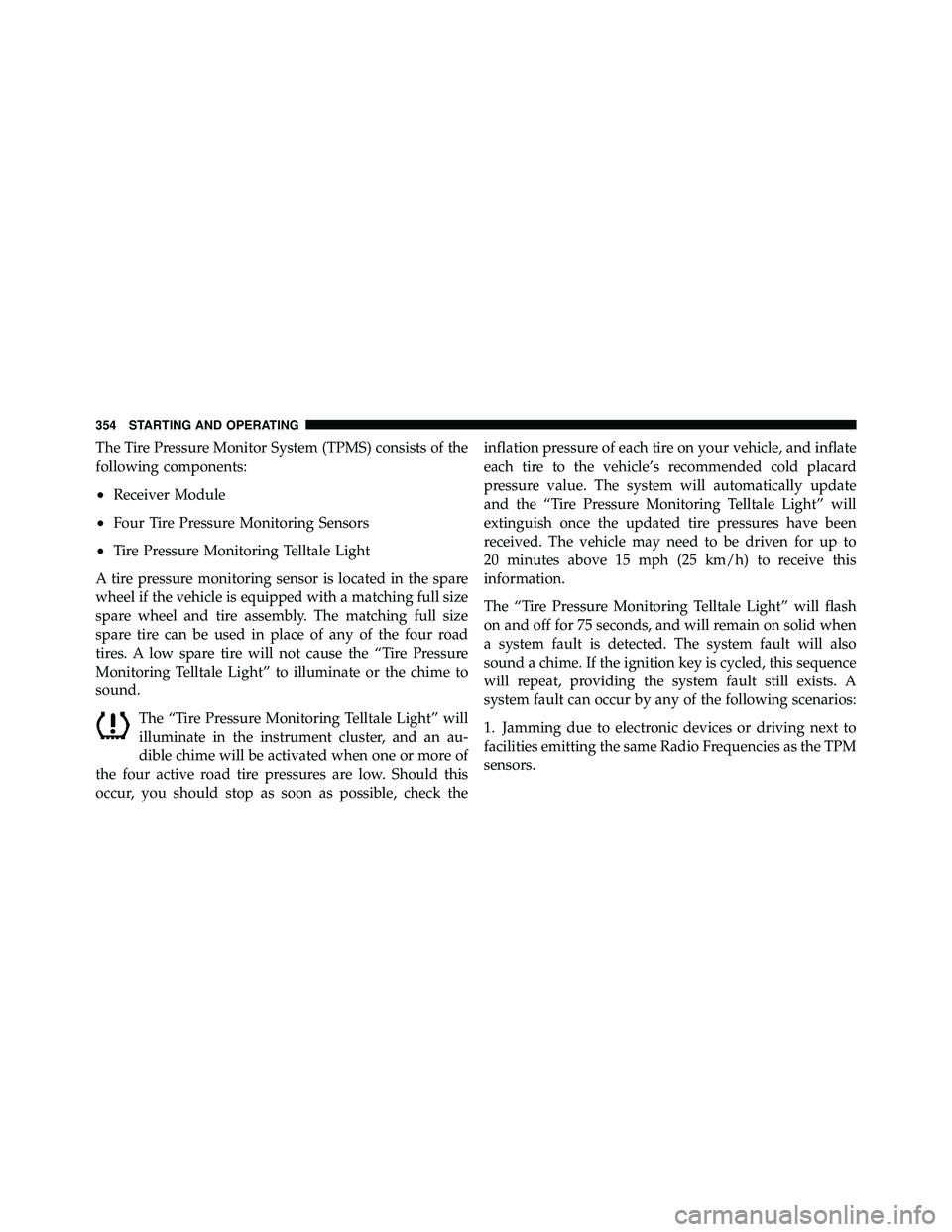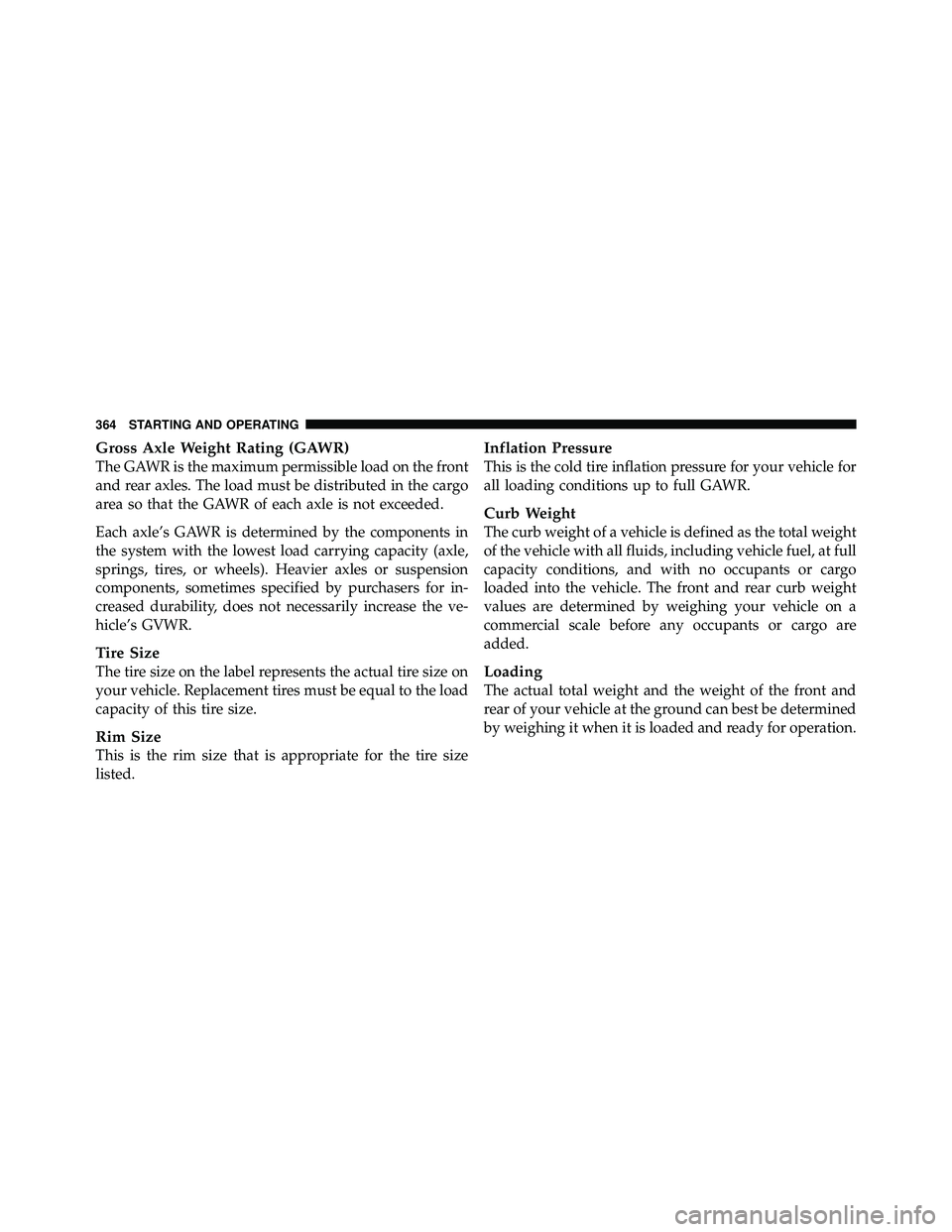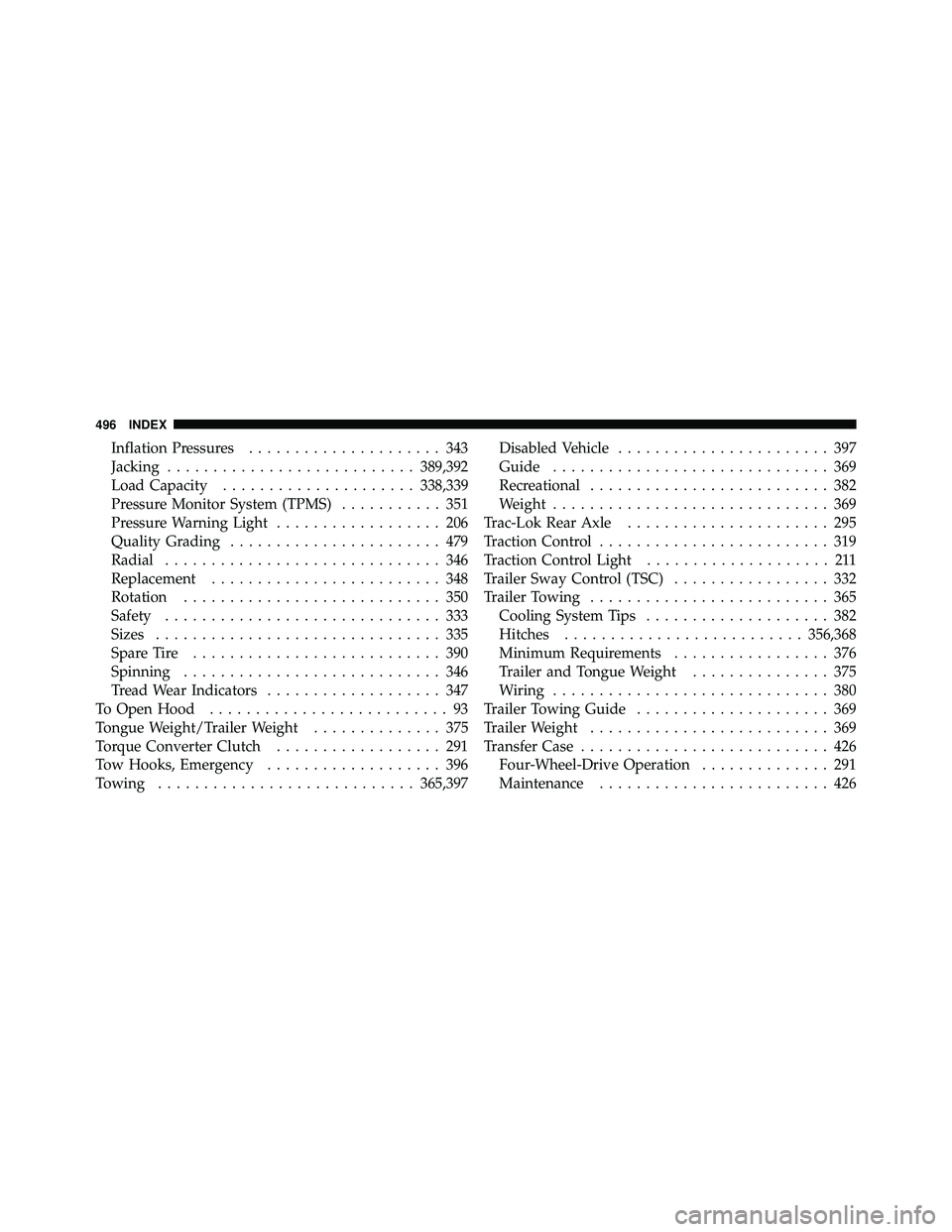wheel size JEEP WRANGLER 2009 Owners Manual
[x] Cancel search | Manufacturer: JEEP, Model Year: 2009, Model line: WRANGLER, Model: JEEP WRANGLER 2009Pages: 502, PDF Size: 13.82 MB
Page 356 of 502

The Tire Pressure Monitor System (TPMS) consists of the
following components:
•Receiver Module
•Four Tire Pressure Monitoring Sensors
•Tire Pressure Monitoring Telltale Light
A tire pressure monitoring sensor is located in the spare
wheel if the vehicle is equipped with a matching full size
spare wheel and tire assembly. The matching full size
spare tire can be used in place of any of the four road
tires. A low spare tire will not cause the “Tire Pressure
Monitoring Telltale Light” to illuminate or the chime to
sound. The “Tire Pressure Monitoring Telltale Light” will
illuminate in the instrument cluster, and an au-
dible chime will be activated when one or more of
the four active road tire pressures are low. Should this
occur, you should stop as soon as possible, check the inflation pressure of each tire on your vehicle, and inflate
each tire to the vehicle’s recommended cold placard
pressure value. The system will automatically update
and the “Tire Pressure Monitoring Telltale Light” will
extinguish once the updated tire pressures have been
received. The vehicle may need to be driven for up to
20 minutes above 15 mph (25 km/h) to receive this
information.
The “Tire Pressure Monitoring Telltale Light” will flash
on and off for 75 seconds, and will remain on solid when
a system fault is detected. The system fault will also
sound a chime. If the ignition key is cycled, this sequence
will repeat, providing the system fault still exists. A
system fault can occur by any of the following scenarios:
1. Jamming due to electronic devices or driving next to
facilities emitting the same Radio Frequencies as the TPM
sensors.
Page 366 of 502

Gross Axle Weight Rating (GAWR)
The GAWR is the maximum permissible load on the front
and rear axles. The load must be distributed in the cargo
area so that the GAWR of each axle is not exceeded.
Each axle’s GAWR is determined by the components in
the system with the lowest load carrying capacity (axle,
springs, tires, or wheels). Heavier axles or suspension
components, sometimes specified by purchasers for in-
creased durability, does not necessarily increase the ve-
hicle’s GVWR.
Tire Size
The tire size on the label represents the actual tire size on
your vehicle. Replacement tires must be equal to the load
capacity of this tire size.
Rim Size
This is the rim size that is appropriate for the tire size
listed.
Inflation Pressure
This is the cold tire inflation pressure for your vehicle for
all loading conditions up to full GAWR.
Curb Weight
The curb weight of a vehicle is defined as the total weight
of the vehicle with all fluids, including vehicle fuel, at full
capacity conditions, and with no occupants or cargo
loaded into the vehicle. The front and rear curb weight
values are determined by weighing your vehicle on a
commercial scale before any occupants or cargo are
added.
Loading
The actual total weight and the weight of the front and
rear of your vehicle at the ground can best be determined
by weighing it when it is loaded and ready for operation.
364 STARTING AND OPERATING
Page 498 of 502

Inflation Pressures..................... 343
Jacking ........................... 389,392
Load Capacity ..................... 338,339
Pressure Monitor System (TPMS) ........... 351
Pressure Warning Light .................. 206
Quality Grading ....................... 479
Radial .............................. 346
Replacement ......................... 348
Rotation ............................ 350
Safety .............................. 333
Sizes ............................... 335
Spare Tire ........................... 390
Spinning ............................ 346
Tread Wear Indicators ................... 347
To Open Hood .......................... 93
Tongue Weight/Trailer Weight .............. 375
Torque Converter Clutch .................. 291
Tow Hooks, Emergency ................... 396
Towing ............................ 365,397Disabled Vehicle
....................... 397
Guide .............................. 369
Recreational .......................... 382
Weight .............................. 369
Trac-Lok Rear Axle ...................... 295
Traction Control ......................... 319
Traction Control Light .................... 211
Trailer Sway Control (TSC) ................. 332
Trailer Towing .......................... 365
Cooling System Tips .................... 382
Hitches .......................... 356,368
Minimum Requirements ................. 376
Trailer and Tongue Weight ............... 375
Wiring .............................. 380
Trailer Towing Guide ..................... 369
Trailer Weight .......................... 369
Transfer Case ........................... 426
Four-Wheel-Drive Operation .............. 291
Maintenance ......................... 426
496 INDEX